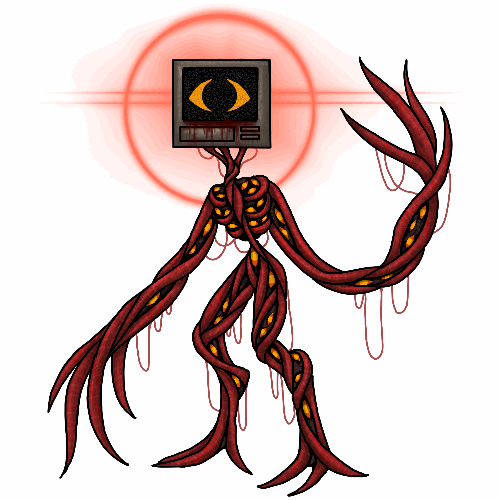Anatomy
In their most basic form, archivists are essentially piles of twisted tendrils that seem to be made of either organic or manufactured materials, depending on the individual. These tendrils can shape themselves into whatever form is desired, most often a vaguely bipedal frame. Contained within the spaces between tendril clumps, their bodies are held together by an amorphous, fleshy substance studded by countless eyes. Archivists have no true “head”, and are consequently quite vulnerable unless they find a vessel to possess. These vessels are typically discarded electronic devices, most commonly CRT televisions. While possessing a device, they can use it to emit various images or sounds in order to communicate.
Origins
It is unknown where or when exactly the first archivist came into existence. Sightings of these creatures were initially reported in the late 1970s, though they have become much more populous in the past few years. As more devices became obsolete and were discarded, more vessels became available for archivists to possess, allowing the population to increase.
Habitat
Archivists can be found wherever there are devices to possess, and thus are often sighted near human settlements. They are most commonly found in the central United States, preferring less populated areas to large cities. The presence of large animals, such as bears, deer, or bison, provides a substantial source of food for wild archivists; not due to their abundance of meat, but their size allows for larger amounts of energy that archivists can drain for their own sustenance.
Behavior
Due to the high risk of negative effects that can come from exposure to an archivist’s signals, it is often difficult to safely observe archivists from a close range.
Trivia/Fun Facts
